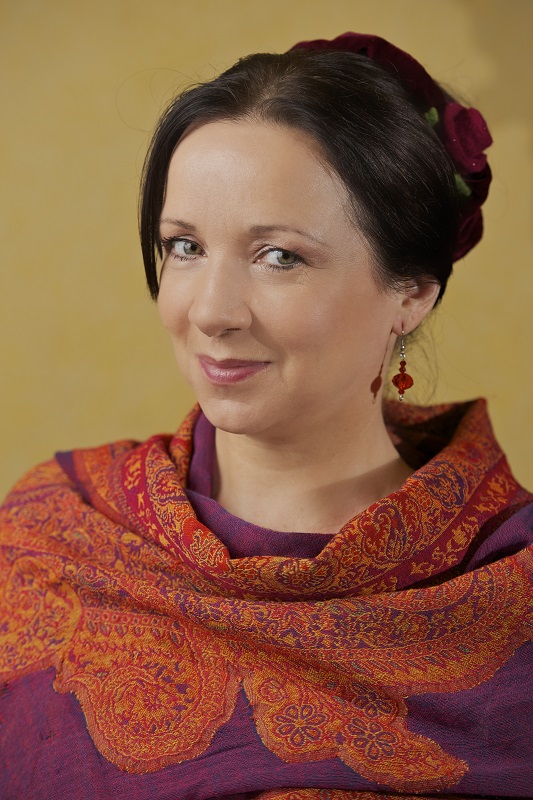Sebestyén, Budapest Festival Orchestra, Fischer, RFH | reviews, news & interviews
Sebestyén, Budapest Festival Orchestra, Fischer, RFH
Sebestyén, Budapest Festival Orchestra, Fischer, RFH
Unforgettable Hungarians, including the magical presence of a great folk singer

This was a very fine concert indeed, plus a lot more. The first half was a very carefully planned series of unveilings around the theme of Béla Bartók and Hungarian folk music, the second an overwhelming performance of his Duke Bluebeard’s Castle.
The evening started with conductor Iván Fischer evoking the crucial incident in Béla Bartók’s life when, newly graduated as pianist and composer, he was mesmerised by the folk singing of Lidi Dósa, a peasant girl from Gerlice. It was that experience which led him to head off to the villages of Hungary and Transylvania with Zoltán Kodály to document the heritage. Fischer played well-contrasted field recordings of folk singing from the collection of over 1,000 that Bartók and Kodály made on an Edison phonograph. Fischer then revealed the great Hungarian folk legend herself – and the daughter of one of Kodály’s pupils – Márta Sebestyén.
 Sebestyén (pictured right by Laszlo Perger) is an astonishing performer. She is that rare phenomenon, a figure of national significance whose communicative powers on stage can completely win over a large audience, most of whom cannot understand a single word she is singing. Someone who knew Anthony Minghella very well told me recently that what had lured him to her voice and her music, and presented him with the perfect music for The English Patient, was that “when you hear it you are not sure where it comes from.”
Sebestyén (pictured right by Laszlo Perger) is an astonishing performer. She is that rare phenomenon, a figure of national significance whose communicative powers on stage can completely win over a large audience, most of whom cannot understand a single word she is singing. Someone who knew Anthony Minghella very well told me recently that what had lured him to her voice and her music, and presented him with the perfect music for The English Patient, was that “when you hear it you are not sure where it comes from.”
That doesn’t just mean that there are common threads running through many different national heritages of folk music, it is also a testament to Sebestyén’s capacity to shape her voice in a way that she almost seems remote from tone production, to be somehow hearing herself from a distance. I loved the way she helped this sense of illusion by hinting through gesture that she might be imitating the sound of the bagpipes, or a guitar. Joined by three string players from the Budapest Festival Orchestra (including András Szabó, an orchestral horn player, on silky smooth yet punchy folk viola), she gave a constant sense of strong rhythmic propulsion, but also of a lightness and ease. This was a demonstration of sheer joy in music-making. I could have happily listened to at least two full sets.
Her two appearances on stage were separated by Bartók’s orchestral versions of Hungarian Peasant Songs from 1933. There were strong affinities in this music with Kodály’s Dances of Galánta, written in the same year. The performance brought out for the first time the sheer warmth and unanimity of the BFO’s string sections. The quality of the orchestra as a whole was there to admire throughout the second half, too. From principal clarinet Ákos Ács as strong solo lead but also a spectral presence, to the gentleness of the flute section, and the superhuman control of principal horn Zoltán Szoke, this is an orchestra which – surely – does not have a single weak link. The listener can also admire the depth and detail of the work that has gone in to the performance to elucidate and balance every texture in every bar of the music. If the thought ever enters your head that this level of preparation is going to lead to a safe performance, Fischer can be seen whipping up energy and intensity, cajoling the players to deliver the peaks of the work with intensity and conviction.
The listener can also admire the depth and detail of the work that has gone in to the performance to elucidate and balance every texture in every bar of the music. If the thought ever enters your head that this level of preparation is going to lead to a safe performance, Fischer can be seen whipping up energy and intensity, cajoling the players to deliver the peaks of the work with intensity and conviction.
Judith in Duke Bluebeard’s Castle is a signature role for Ildikó Komlósi who has performed it over 150 times. In her wonderfully judged interpretation, the character’s unremitting search for answers never seemed repetitive. There may be singers who can deliver more tonal beauty and possibly more power, but Komlósi had the audience unfailingly involved in her hopeless quest. True bass Krisztián Cser (pictured above by Hermann Peter) as Bluebeard was at his best in the story-telling episode when he tells Judith about his previous wives. The two soloists both gave authenticity, understanding and constant fresh insights into the bleak technicolour of Duke Bluebeard’s Castle. Unforgettable.
rating
Share this article
Add comment
The future of Arts Journalism
You can stop theartsdesk.com closing!
We urgently need financing to survive. Our fundraising drive has thus far raised £49,000 but we need to reach £100,000 or we will be forced to close. Please contribute here: https://gofund.me/c3f6033d
And if you can forward this information to anyone who might assist, we’d be grateful.

Subscribe to theartsdesk.com
Thank you for continuing to read our work on theartsdesk.com. For unlimited access to every article in its entirety, including our archive of more than 15,000 pieces, we're asking for £5 per month or £40 per year. We feel it's a very good deal, and hope you do too.
To take a subscription now simply click here.
And if you're looking for that extra gift for a friend or family member, why not treat them to a theartsdesk.com gift subscription?

Comments
Thanks dear Sebastian Scotney